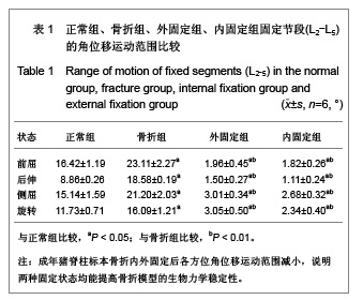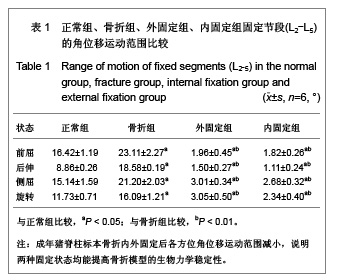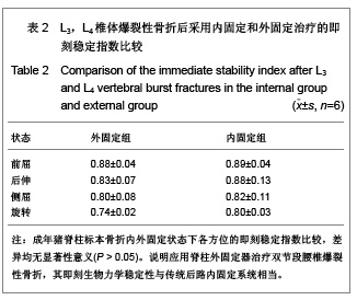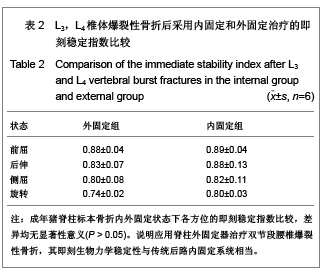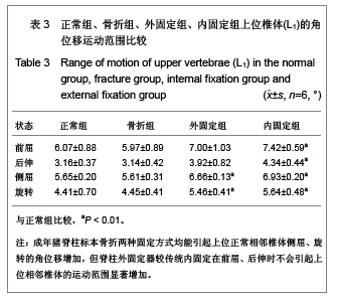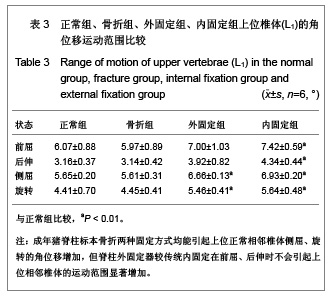| [1] Wang W, Yao N, Song X,et al. External spinal skeletal fixation combination with percutaneous injury vertebra bone grafting in the treatment of thoracolumbar fractures. Spine (Phila Pa 1976). 2011;36(9):E606-E611.[2] Song XZ,Wang XD,Wang WJ,et al. Zhongguo Gushang. 2008; 21(9):698-699. 宋西正,汪向东,王文军,等.脊柱外固定器的研制及其在胸腰椎骨折微创治疗中的临床应用[J].中国骨伤,2008,21(9):698-699. [3] Wang C,Wang WJ.Yao NZ,et al. Zhongguo Jiaoxing Waike Zazhi. 2007;15(14):1114-1115. 王程,王文军,姚女兆,等. 新型脊柱外固定器在胸腰椎爆裂性骨折临床应用中的适应证探讨[J].中国矫形外科杂志,2007, 15(14): 1114-1115. [4] Liu H,Wang WJ,Song XZ,et al. Yixue Linchuang Yanjiu. 2006; 23(2):148-150. 刘洪,王文军,宋西正,等.新型脊柱外固定器的研制和生物力学测试[J].医学临床研究,2006,23(2):148-150. [5] Wang WJ,Song XZ,Wang LS,et al. Zhongguo Jizhu Jisui Zazhi. 2008;18(10):741-746. 王文军,宋西正,王麓山,等.脊柱外固定器联合内窥镜技术治疗胸腰椎爆裂骨折[J].中国脊柱脊髓杂志,2008,18(10):741-746.[6] Song XZ,Yi GL,Wang WJ,et al. Zhongguo Jizhu Jisui Zazhi. 2011;21(8):659-662. 宋西正,易国良,王文军,等.外固定器整复下经皮椎体成形术治疗伤椎后壁破损的骨质疏松性压缩骨折[J].中国脊柱脊髓杂志, 2011,21(8):659-662.[7] Panjabi M, Malcolmson G, Teng E,et al. Hybrid testing of lumbar CHARITE discs versus fusions. Spine (Phila Pa 1976). 2007;32(9):959-966.[8] Chen BL,Wei FX, Kazumasa Ueyama,et al. Zhongguo Jizhu Jisui Zazhi. 2011;21(2):108-112. 陈柏龄,魏富鑫,植山和正,等.腰椎单节段固定融合术后上位相邻节段退变及其与临床疗效的关系[J].中国脊柱脊髓杂志,2011, 21(2):108-112. [9] Ding Y,Ruan DK,Zhao WD,et al. Zhongguo Linchuang Jiepouxue Zazhi. 2003;21(4):371-374. 丁宇,阮狄克,赵卫东,等.脊柱融合内固定致邻近节段退变的生物力学机制[J].中国临床解剖学杂志,2003,21(4):371-374. [10] Lee CS, Hwang CJ, Lee SW,et al. Risk factors for adjacent segment disease after lumbar fusion. Eur Spine J. 2009; 18(11): 1637-1643.[11] Wilke HJ, Wenger K, Claes L.Testing criteria for spinal implants: recommendations for the standardization of in vitro stability testing of spinal implants. Eur Spine J. 1998;7(2): 148-154.[12] Park P, Garton HJ, Gala VC,et al. Adjacent segment disease after lumbar or lumbosacral fusion: review of the literature.Spine (Phila Pa 1976). 2004;29(17):1938-1944.[13] Lu WW, Cheung KM, Li YW,et al. Bioactive bone cement as a principal fixture for spinal burst fracture: an in vitro biomechanical and morphologic study. Spine (Phila Pa 1976). 2001;26(24):2684-2690.[14] Zencica P, Chaloupka R, Hladíková J,et al. Adjacent segment degeneration after lumbosacral fusion in spondylolisthesis: a retrospective radiological and clinical analysis. Acta Chir Orthop Traumatol Cech. 2010;77(2):124-130.[15] Jiang X,Tan MS. Zhongguo Jizhu Jisui Zazhi. 2006;16(11): 869-871. 蒋欣,谭明生.腰椎椎间小关节退行性变的研究进展[J].中国脊柱脊髓杂志,2006,16(11):869-871.[16] Bastian L, Lange U, Knop C,et al. Evaluation of the mobility of adjacent segments after posterior thoracolumbar fixation: a biomechanical study. Eur Spine J. 2001;10(4):295-300.[17] Li CD,Yu ZR,Liu XY,et al. Zhonghua Waike Zazhi. 2006; 44(4): 246-248. 李淳德,于峥嵘,刘宪义,等.腰椎内固定融合术后邻近节段退变的影响因素[J].中华外科杂志,2006,44(4):246-248.[18] Moeini SM, Nasca RJ, Lemons JE,et al. Intervertebral spacer as an adjunct to anterior lumbar fusion. Part I. Design, fabrication, and testing of three prototypes. J Spinal Disord. 1998;11(2):129-135. |
